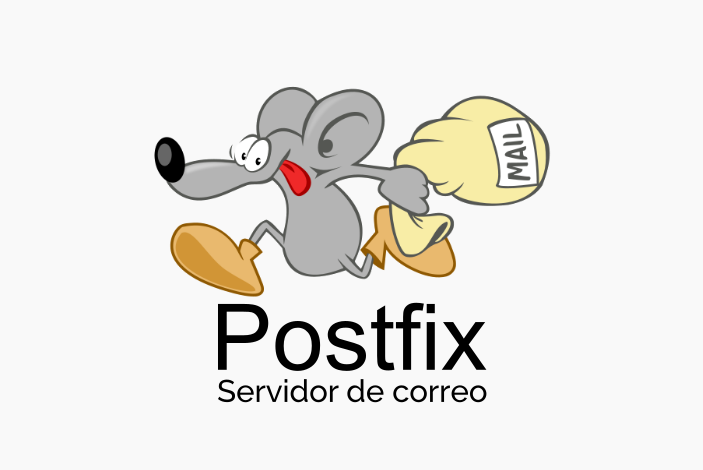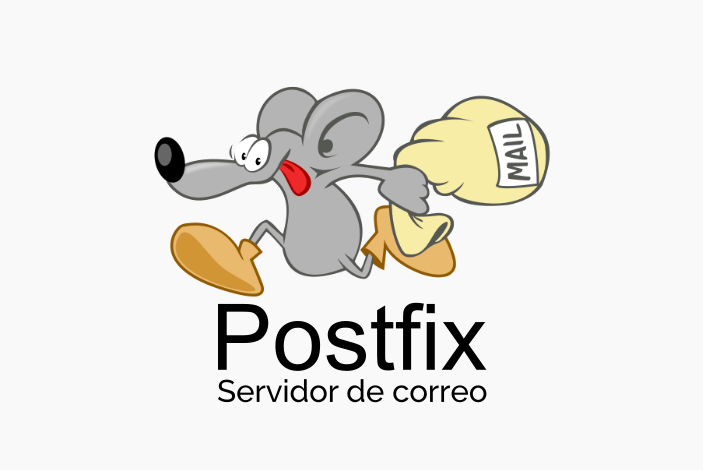Postfix sets the stage for this enthralling narrative, offering readers a glimpse into a story that is rich in detail and brimming with originality from the outset. Postfix is a robust and reliable Mail Transfer Agent (MTA) that plays a pivotal role in the intricate world of email communication. As a fundamental component of email systems, Postfix empowers organizations to send, receive, and manage emails securely and efficiently.
This comprehensive guide delves into the core concepts, configuration, and functionalities of Postfix, exploring its architecture, security measures, and integration with other systems. From understanding the basic principles of email routing and delivery to mastering advanced features like virtual domains and mail filtering, this exploration unveils the power and versatility of Postfix in modern email environments.
Postfix Configuration
Postfix is a powerful and flexible mail server that can be configured to handle a wide range of email scenarios. The configuration of Postfix is done through a set of text files, primarily main.cf and master.cf.
Main Configuration File (main.cf)
The main.cf file contains the primary configuration settings for Postfix. It defines global parameters, such as the domain name, the sender address, and the mail queue directory. Here are some examples of common configuration options in main.cf:
- myorigin: This option defines the domain name used for outgoing mail. For example, setting
myorigin = example.comwill cause Postfix to use example.com as the domain name in the “From:” header of outgoing emails. - myhostname: This option defines the hostname of the mail server. It is used for identifying the server in email headers and for DNS lookups.
- mydestination: This option defines the list of domains that the mail server will accept mail for. It is used to prevent the server from accepting mail for domains that it is not responsible for.
- relayhost: This option specifies the address of a remote mail server to be used for relaying mail. This is useful for servers that do not have their own DNS records or for servers that need to use a different mail server for sending mail.
- inet_interfaces: This option specifies the network interfaces that Postfix should listen on for incoming mail connections. By default, Postfix listens on all interfaces, but it is recommended to restrict it to specific interfaces for security reasons.
- smtp_tls_security_level: This option controls the level of TLS security used for SMTP connections. It can be set to
none,may,encrypt, ordns.nonedisables TLS,mayallows TLS but does not require it,encryptrequires TLS, anddnsuses DNS to determine whether TLS should be used.
Master Configuration File (master.cf)
The master.cf file defines the services that Postfix runs. Each service is defined as a line in the file, and each line contains information about the service, such as the command to execute, the port to listen on, and the process type.
- smtp: This service handles incoming SMTP connections and is responsible for receiving mail. It is typically configured to listen on port 25.
- submission: This service handles incoming SMTP connections that are explicitly intended for sending mail. It is typically configured to listen on port 587 and may require TLS encryption.
- pickup: This service reads mail from the local queue and attempts to deliver it to the recipient. It is typically configured to run as a daemon.
- qmgr: This service manages the mail queue, including adding, removing, and retrying messages.
- local: This service handles mail that is destined for local users. It is typically configured to run as a daemon.
- virtual: This service handles mail that is destined for users that are not defined in the local user database. It is typically configured to run as a daemon.
- virtual_mailbox: This service handles mail that is destined for users that are defined in a virtual mailbox system. It is typically configured to run as a daemon.
Configuring Postfix for Different Email Scenarios
Postfix can be configured to handle different email scenarios, such as sending, receiving, and relaying emails.
Sending Email
To configure Postfix for sending email, you need to define the domain name, the sender address, and the relay host (if necessary). For example, to send mail from a server with the domain name example.com, you would set myorigin = example.com and myhostname = mail.example.com. If the server does not have its own DNS records, you would need to specify a relay host using the relayhost option.
Receiving Email
To configure Postfix for receiving email, you need to define the list of domains that the server will accept mail for. You can do this using the mydestination option. For example, to accept mail for the domain example.com, you would set mydestination = example.com. You also need to configure the SMTP service to listen on the appropriate port (typically port 25).
Relaying Email
To configure Postfix for relaying email, you need to specify a relay host using the relayhost option. For example, to relay mail through the server smtp.example.com, you would set relayhost = [smtp.example.com].
Security and Anti-Spam Measures
Email systems are critical for communication and business operations, making their security a top priority. Postfix, a robust and widely used mail server, provides a comprehensive set of features that enhance security and combat spam.
Security Vulnerabilities and Mitigation
Email systems are susceptible to various security vulnerabilities, including unauthorized access, data breaches, and malware propagation. Postfix offers several mechanisms to mitigate these risks.
- Authentication and Authorization: Postfix supports various authentication protocols like SASL (Simple Authentication and Security Layer) and TLS (Transport Layer Security), ensuring that only authorized users can access the mail server and send emails. This prevents unauthorized access and spoofing.
- Access Control: Postfix allows for granular access control, restricting access to specific users, networks, or IP addresses. This helps prevent unauthorized access and malicious activity.
- Data Encryption: Postfix supports encryption protocols like TLS, ensuring that email content remains confidential during transmission. This prevents eavesdropping and data interception.
- Regular Updates and Patches: Keeping Postfix and its associated software up-to-date with the latest security patches is crucial. Regular updates address known vulnerabilities and protect against emerging threats.
Anti-Spam Techniques, Postfix
Spam emails can overwhelm mail servers, disrupt business operations, and compromise user privacy. Postfix incorporates several anti-spam techniques to filter out unwanted messages.
- Spam Filters: Postfix includes built-in spam filters that analyze incoming emails based on various criteria, such as sender reputation, content analysis, and header information. Suspicious emails are flagged or rejected.
- Blacklists: Postfix can leverage blacklists, which are lists of known spam sources. Emails originating from these sources are blocked or flagged.
- Greylisting: This technique delays delivery of emails from unknown senders. If the sender is legitimate, they will retry sending the email, while spammers are less likely to persist.
- Rate Limiting: Postfix can limit the number of emails a sender can send within a specific time frame. This helps prevent spammers from flooding mail servers with unsolicited messages.
- Content Filtering: Postfix can filter emails based on their content, such as the presence of s, links, or images associated with spam.
Postfix Administration and Maintenance
Postfix administration and maintenance are crucial for ensuring reliable and secure email delivery. Proper monitoring, troubleshooting, and regular updates are essential to maintain optimal performance and protect against vulnerabilities.
Monitoring and Management Tools
Monitoring and managing Postfix effectively requires the use of various tools and methods. These tools provide insights into the health and performance of the server, enabling timely intervention and proactive maintenance.
- Postfix command-line utilities: Postfix provides a comprehensive set of command-line utilities for managing various aspects of the server, including configuration, queue management, and statistics. These utilities offer a powerful and flexible way to interact with Postfix.
- System monitoring tools: System monitoring tools like
top,htop, andsarcan be used to monitor system resources such as CPU, memory, and disk usage. This helps identify potential bottlenecks or resource constraints that might affect Postfix performance. - Log analysis: Postfix logs provide valuable information about the server’s activities, including successful and failed message deliveries, errors, and warnings. Analyzing these logs can help identify and resolve issues related to email delivery, spam filtering, or security breaches.
- Web-based monitoring dashboards: Several web-based monitoring dashboards, such as Grafana or Zabbix, can be integrated with Postfix to visualize key performance indicators (KPIs) and provide alerts for potential issues. These dashboards offer a centralized and interactive way to monitor the server’s health.
Troubleshooting Common Postfix Issues
Troubleshooting common Postfix issues involves identifying the root cause of the problem and implementing appropriate solutions. Common issues include email delivery failures, spam filtering problems, and security vulnerabilities.
- Email delivery failures: When emails fail to be delivered, it’s essential to examine the error messages generated by Postfix. These messages often provide valuable clues about the cause of the failure, such as a missing MX record, a temporary server error, or a recipient address that is invalid. Analyzing the error messages can help pinpoint the issue and guide the troubleshooting process.
- Spam filtering problems: Misclassifications of legitimate emails as spam or the failure to block spam emails can be frustrating. It’s important to examine the spam filtering configuration, including the rules and filters used, and adjust them as needed to improve accuracy. Using a spam filtering service can also enhance spam detection capabilities.
- Security vulnerabilities: Regularly checking for and applying security patches is crucial for protecting Postfix from vulnerabilities. Outdated software can be exploited by attackers, leading to data breaches or server compromise. Staying up-to-date with security patches ensures that the server is protected against known vulnerabilities.
Importance of Regular Updates and Security Patches
Regularly updating Postfix is crucial for maintaining its security and performance. Updates address known vulnerabilities, fix bugs, and introduce new features, ensuring that the server remains resilient and protected against threats.
- Vulnerability mitigation: Security patches are released to address newly discovered vulnerabilities that could be exploited by attackers. Applying these patches promptly helps protect the server from potential security breaches and data loss.
- Bug fixes: Updates often include bug fixes that resolve issues that may impact the server’s performance, stability, or functionality. Applying these fixes helps ensure smooth operation and prevents unexpected errors or downtime.
- New features: Updates may introduce new features that enhance the server’s capabilities, such as improved performance, enhanced security features, or support for new protocols. Keeping Postfix up-to-date ensures access to these new features and benefits.
Postfix Integration with Other Systems
Postfix, a robust and versatile mail transfer agent (MTA), is often integrated with various other email-related services to enhance functionality and streamline workflows. This integration enables seamless communication between different components within an email infrastructure, ensuring smooth email delivery and management.
Integration with Webmail Platforms
Webmail platforms, such as Roundcube, SquirrelMail, and Horde, provide users with a web-based interface to access and manage their email accounts. Postfix can be integrated with these platforms to enable users to send and receive emails through their webmail interface. This integration is typically achieved through the use of the virtual user feature in Postfix, which allows mapping user accounts from a webmail platform to corresponding mailboxes managed by Postfix.
- Virtual User Configuration: The virtual user feature in Postfix allows administrators to define virtual users, which are users that do not have a physical mailbox on the system. These virtual users are mapped to real mailboxes, enabling users to access their email accounts through the webmail platform.
- Authentication and Authorization: Postfix can be configured to authenticate users against the webmail platform’s user database. This ensures that only authorized users can access their email accounts.
- Webmail Interface Integration: The webmail platform interacts with Postfix through APIs or protocols like IMAP or POP3. This allows users to access their email accounts, send and receive messages, and manage their mailboxes.
Integration with Email Clients
Email clients, such as Microsoft Outlook, Mozilla Thunderbird, and Apple Mail, provide users with a desktop-based interface to manage their emails. Postfix can be integrated with these clients to enable users to send and receive emails through their email client. This integration is typically achieved through the use of the IMAP and POP3 protocols.
- IMAP (Internet Message Access Protocol): IMAP allows users to access and manage their email accounts remotely. This protocol provides a synchronized view of the user’s mailbox across multiple devices. Email clients can connect to Postfix via IMAP to access, manage, and synchronize emails.
- POP3 (Post Office Protocol 3): POP3 allows users to download emails from a server to their email client. This protocol is typically used for downloading emails to a single device and does not provide synchronization capabilities. Email clients can connect to Postfix via POP3 to download emails and manage them locally.
Integration with Other Email Services
Postfix can be integrated with various other email-related services, such as spam filters, virus scanners, and email archiving solutions. This integration enhances email security and management capabilities.
- Spam Filters: Postfix can be integrated with spam filters, such as SpamAssassin or ClamAV, to identify and block spam emails. This integration can be achieved through the use of the milter protocol. Milter is a protocol that allows third-party applications to intercept and modify email messages before they are delivered.
- Virus Scanners: Postfix can be integrated with virus scanners, such as ClamAV or AVG, to scan incoming and outgoing emails for viruses. This integration can also be achieved through the use of the milter protocol.
- Email Archiving Solutions: Postfix can be integrated with email archiving solutions, such as Mimecast or Proofpoint, to store copies of all emails for legal or regulatory compliance purposes. This integration is typically achieved through the use of the SMTP protocol and configuration settings that redirect email copies to the archiving solution.
Postfix Use Cases

Postfix is a widely used and versatile mail transfer agent (MTA) that finds applications in a variety of industries and organizations. Its robust features, reliability, and security make it a preferred choice for handling email traffic in diverse scenarios. This section explores some common use cases of Postfix, showcasing its adaptability and contribution to various business needs.
Email Infrastructure for Businesses
Postfix is a core component of email infrastructure for businesses of all sizes. It acts as the central hub for sending and receiving emails, ensuring reliable communication with customers, partners, and employees. Postfix’s robust features, including support for multiple domains, virtual users, and mail queue management, make it suitable for handling large volumes of email traffic.
Postfix enables businesses to manage email workflows efficiently, deliver messages reliably, and maintain a secure email environment.
Email Marketing and Campaigns
Postfix plays a crucial role in email marketing campaigns, enabling businesses to send bulk emails to their subscribers and manage email lists. Its features like sender address verification and rate limiting help ensure deliverability and prevent spam complaints.
Postfix’s ability to handle large volumes of email traffic and its robust spam filtering mechanisms make it an ideal choice for email marketing platforms.
E-commerce and Online Transactions
Postfix is essential for e-commerce platforms, facilitating secure and reliable communication for online transactions. It enables secure email communication for order confirmations, password resets, and customer support interactions.
Postfix’s security features, such as TLS encryption and sender authentication, protect sensitive information exchanged during online transactions.
Educational Institutions
Educational institutions rely on Postfix to manage email communication among students, faculty, and staff. Postfix’s features like user management and access control allow institutions to create and manage email accounts for students, faculty, and staff.
Postfix’s robust features enable educational institutions to create a secure and reliable email environment for academic purposes.
Government Agencies
Government agencies use Postfix for secure and reliable communication with citizens, businesses, and other government entities. Postfix’s compliance with security standards and its ability to manage large volumes of email traffic make it a suitable choice for government agencies.
Postfix’s security features and compliance with government regulations ensure secure and reliable communication within government agencies.
Non-profit Organizations
Non-profit organizations use Postfix to manage email communication with donors, volunteers, and supporters. Postfix’s features like user management and access control enable non-profit organizations to manage email accounts for their members and staff.
Postfix’s reliability and security features ensure secure and reliable communication for non-profit organizations, enabling them to connect with their stakeholders.
Research and Development
Postfix is used in research and development environments for projects that involve email communication and data analysis. Its features like message queuing and logging enable researchers to analyze email patterns and trends.
Postfix’s ability to handle large volumes of email traffic and its comprehensive logging capabilities make it suitable for research projects that involve email analysis.
Final Summary

In conclusion, Postfix emerges as a cornerstone of email infrastructure, offering a robust and adaptable solution for managing email communication. Its powerful features, security measures, and integration capabilities make it a reliable choice for organizations of all sizes. As email continues to evolve, Postfix remains at the forefront, enabling seamless and secure communication in an increasingly interconnected world.
Postfix is a powerful and reliable mail server that can be essential for businesses that need to manage large volumes of email. If you’re looking for the best performance and control, a dedicated hosting solution like dedicated hosting can provide the ideal environment for running Postfix.
This ensures that your mail server has the resources it needs to function smoothly and efficiently, allowing you to focus on managing your email operations without performance bottlenecks.

